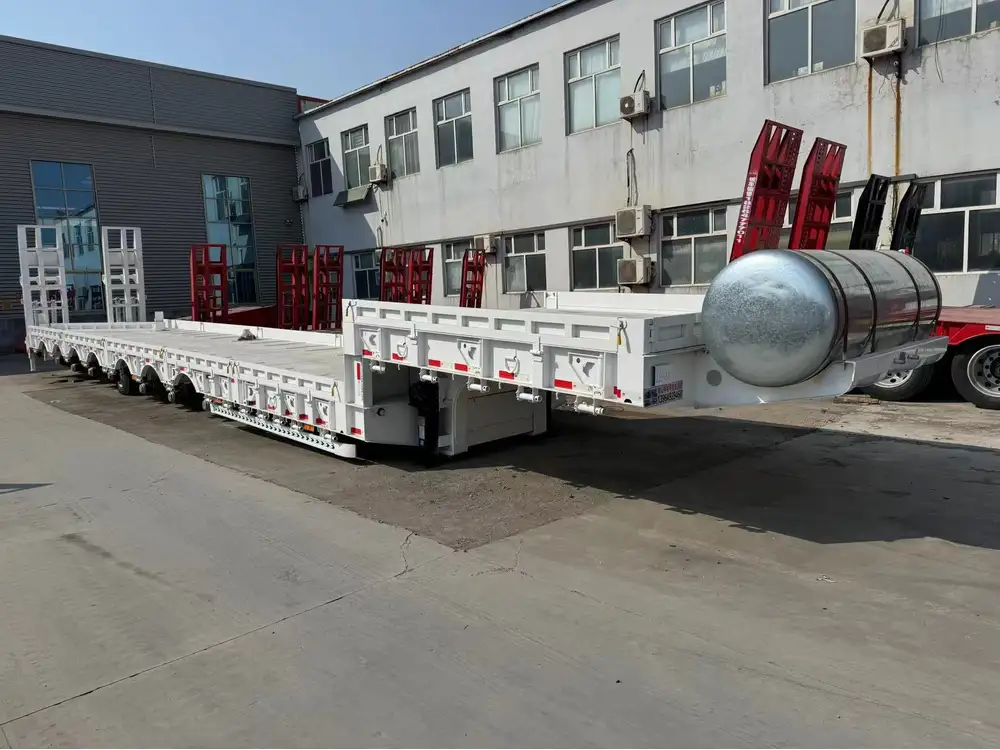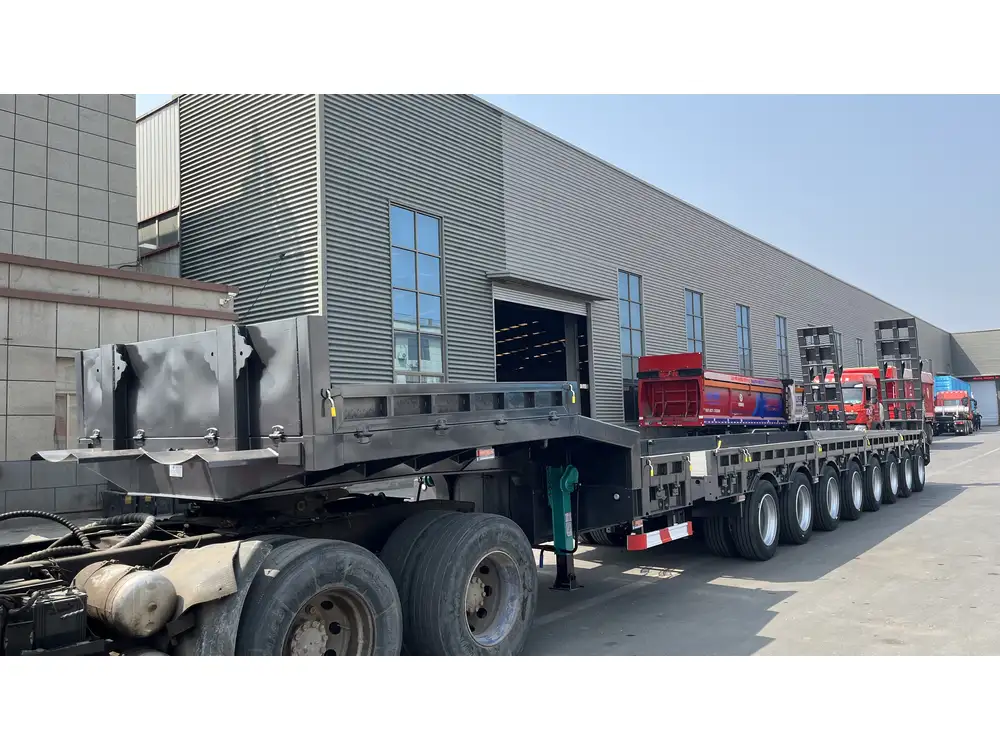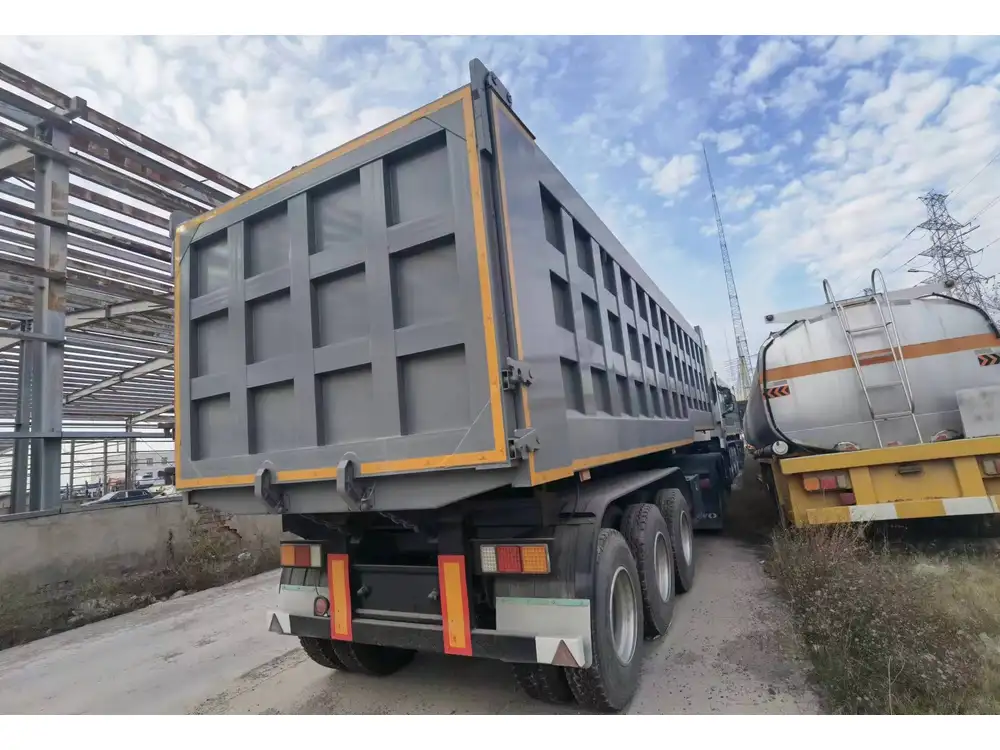Hooking up a semi-trailer requires precision, knowledge, and a systematic approach to ensure safety and efficiency. In this detailed guide, we’ll walk you through the essential steps, explain the critical components involved, address common issues, and provide practical tips. This structured information aims to empower both beginners and seasoned truck drivers with the expertise necessary to connect a semi-trailer successfully.
Understanding Semi-Trailer Components
Before embarking on the hooking process, it’s vital to familiarize ourselves with the primary components that play a crucial role in this operation. Here’s a detailed breakdown:
| Component | Description |
|---|---|
| Fifth Wheel | A coupling device mounted on the truck chassis that locks the semi-trailer in place. |
| Kingpin | A steel pin attached to the front of the semi-trailer that fits into the fifth wheel. |
| Landing Gear | Retractable legs that stabilize the semi-trailer when not hitched to the truck. |
| Brake Lines | Hoses that connect the trailer’s air brake system to the truck’s braking system. |
| Electrical Lines | Wires linking the truck’s electrical system to the trailer for lights and other functions. |
Understanding these components is crucial for a seamless operation when connecting a semi-trailer.
Preparing for Hooking Up
Preparation is key to a successful connection. Follow these steps to ensure you are ready:

1. Inspect Both Vehicles
Before you begin, a thorough inspection of both the truck and the semi-trailer is essential. This should include:
- Visual Checks: Look for any visible damage. Pay attention to the kingpin, fifth wheel, and landing gear.
- Fluid Levels: Ensure that the brake fluid, coolant, and other vital fluids are at appropriate levels.
- Tire Condition: Check that both the truck and trailer tires are properly inflated and free from excessive wear.
2. Align the Truck and Trailer
Position the truck so that it is perfectly aligned with the trailer. The back of the truck should be approximately a foot from the front of the trailer. Use the following techniques to achieve accurate alignment:
- Back-Cutting: Use mirrors strategically to monitor your angle as you back up.
- Guidance from a Spotter: If available, have a partner guide you in the process to ensure you’re straight.
The Hooking Process
Now that both vehicles are inspected and aligned, we proceed to the actual hooking up process.

Step 1: Lower the Landing Gear
Activate the landing gear using the crank handle. The goal is to lower the landing gear completely, ensuring the semi-trailer is stable and can support its weight.
Step 2: Back the Truck into Position
Carefully reverse the truck towards the semi-trailer. Here are some tips for this stage:
- Slow and Steady: Maintain a slow speed to allow for adjustments as needed.
- Monitor Your Surroundings: Keep an eye out for obstacles, pedestrians, and other vehicles.
Step 3: Engage the Fifth Wheel
Once you’re in position, back the truck until the kingpin slides into the fifth wheel. Listen for the clicking sound indicating a proper connection. To test the engagement:
- Visual Check: Look for the kingpin locked into the jaws of the fifth wheel.
- Push Test: Pull forward slightly to verify that the trailer is securely attached.

Step 4: Secure the Air and Electrical Connections
Next, attach the air and electrical lines:
- Air Lines: Ensure the blue service line and the red emergency line are connected correctly. The blue line is for trailer brakes while the red line is for the emergency system.
- Electrical Lines: Plug in the wiring harness to activate trailer lights and functions. Check that the turn signals and brake lights work correctly.
Step 5: Raise the Landing Gear
After ensuring that everything is connected, raise the landing gear to clear the ground:
- Crank the Landing Gear: Rotate the crank handle until the landing gear is fully retracted and clear of the ground.
Step 6: Perform Final Checks
Conduct a final inspection before pulling away. This should include:
- Brake Check: Engage the brakes and ensure that the trailer brakes are functioning.
- Light Check: Test all lights, including brake lights and turn signals.
- Tire Check: Make a quick visual assessment to confirm that tires appear safe.

Troubleshooting Common Issues
Despite careful preparation and execution, issues may arise. Being prepared saves time and enhances safety. Here’s a breakdown of potential problems and solutions:
Problem 1: Kingpin Not Engaging
Solution:
- Adjust Trailer Position: Move the trailer slightly to ensure the kingpin is aligned with the fifth wheel.
- Check for Obstructions: Make sure there’s no debris or ice hindering contact.

Problem 2: Air Leaks
Solution:
- Inspect Connections: Examine all air lines for cracks or loose fittings.
- Check Valves: Ensure that the supply and emergency shut-off valves are securely closed.
Problem 3: Electrical Failures

Solution:
- Inspect Wiring: Check for damaged wires or loose connections in the truck and on the trailer.
- Test Harness: Use a multimeter to ensure current flows correctly through the wires.
Best Practices for Hooking Up a Semi-Trailer
To enhance safety and improve efficiency, consider implementing these best practices:
1. Training and Certification
Ensure all drivers are adequately trained. Specialized training provides essential skills and enhances safety.

2. Regular Maintenance
Conduct routine inspections on both trucks and trailers, including:
- Brake systems
- Electrical systems
- Structural integrity (frame, axles)
3. Using Safety Features
Many modern semi-trailers come equipped with additional safety features, such as automated braking systems and electronic stability controls. Always utilize these systems to their fullest capability.
4. Utilizing Technology
Implement technology in your fleet management. GPS tracking, electronic logging devices (ELDs), and telematics can help track vehicle performance and improve safety.

Conclusion
Mastering the art of hooking up a semi-trailer is an essential skill for truck operators. Through rigorous preparation, understanding your equipment, and adhering to best practices, you can ensure a safe and efficient connection with every use. Always prioritize inspections and training to mitigate risks associated with the operation of semi-trailers. As you engage with this complex task, remember that every detail counts, from the initial alignment to the final checks of all systems involved. With this comprehensive guide, you are now better equipped to tackle the challenge of hooking up a semi-trailer, ensuring a smooth operation every time you hit the road.



